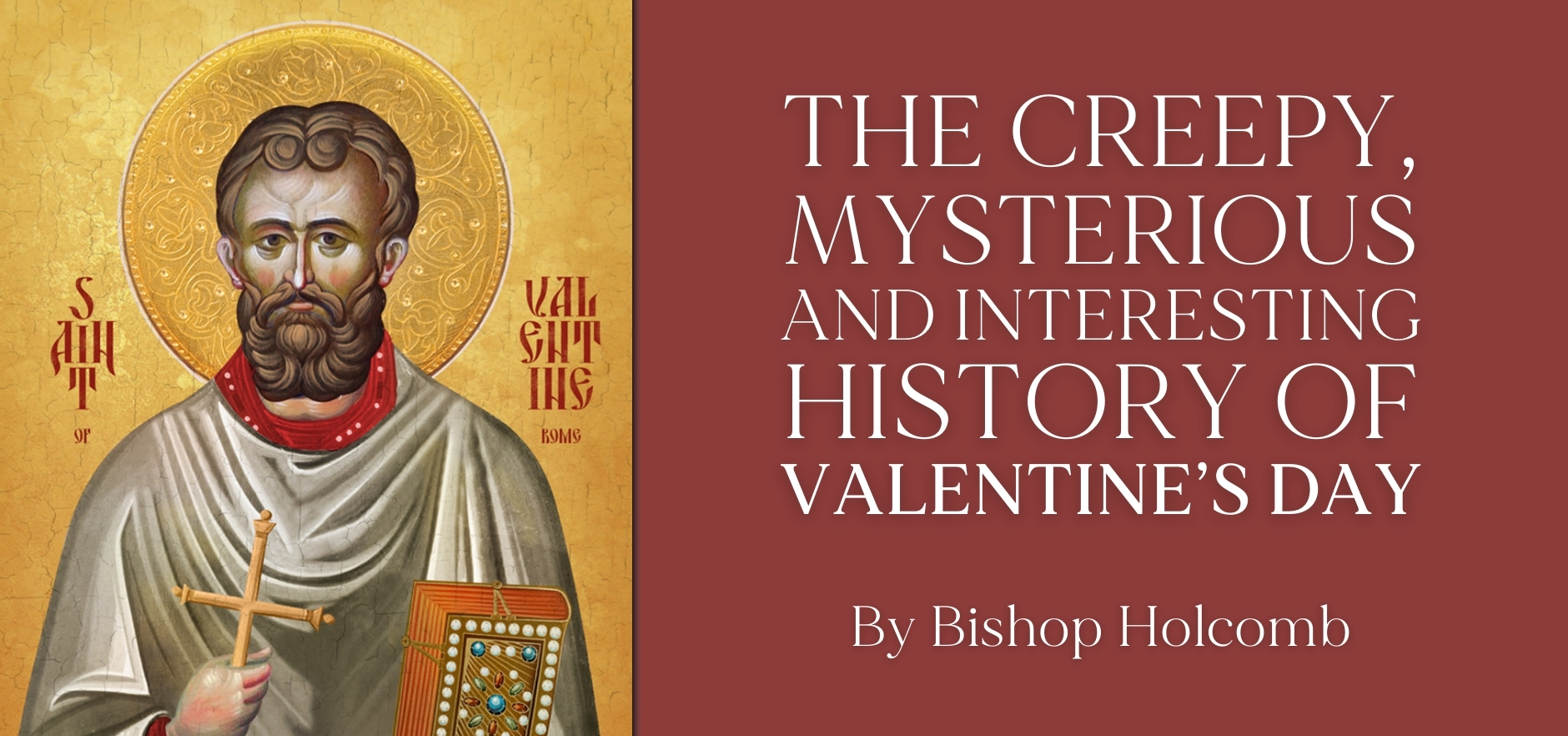
Love it or hate it, Valentine’s Day is a major staple of American culture. Few know much about its history, however.
Some dismiss Feb. 14 as a “Hallmark holiday” created to indulge the consumerist habits of wealthy Americans; others disdain it as overly romantic and serving little purpose. Yet for the majority of Americans, Valentine’s Day is a significant opportunity to celebrate love and romance.
For instance, in 2023 the average American spent more than $192 on Valentine’s Day. In total, Americans budgeted $5.5 billion on jewelry and $4.9 billion on dates out for the holiday that year. Not forgetting their dogs and cats, consumers also spend $1.5 billion on their pets each year at Valentine’s Day. There are an estimated 200,000 proposals every Valentine’s Day, which is 5% of the annual total. It is estimated that 15% of women send themselves flowers for the holiday.
The Mysterious History
No one is quite sure where Valentine’s Day comes from. While any specific theory of its origins must be held at arm’s length, most people do agree that the holiday, as we know it today, contains a blend of practices inherited from a pagan Roman festival, fifth-century Christianity and the Middle Ages.
Lupercalia: A pagan Roman fertility festival. The earliest origins of Valentine’s Day can be traced to the ancient Roman fertility festival called Lupercalia, dedicated to Faunus, the Roman god of agriculture; and the founders of Rome, Romulus and Remus. This festival, Ted Olsen explains, was a sort of “sexual lottery” in which people would “pull names out of a box at random and couple with a young member of the opposite sex.” During the festival, men would sacrifice a goat and a dog, and women would line up to be “lashed” with shaggy strips of hide from the sacrificed animals, believing such a ritual would increase their fertility. The holiday was characterized by lots of nakedness, drunkenness and carousing and had little to do with love, romance and affection.
Saint Valentine: Several legendary Christians. Somewhere along the line, the church began to celebrate a feast in February commemorating the death of Saint Valentine, a Christian martyr. However, one of the difficulties with pinpointing the patron saint of the holiday is that there were legends of three men named Valentine being executed in the first few centuries of Christianity.
Legend has it that Roman Emperor Claudius II executed two men named Valentine on Feb. 14 in the third century A.D. One story says Valentine was a priest who continued to perform marriages even when the emperor had issued an edict against marriage to ensure his soldiers had no family ties.
Another legend says Valentine was a Christian who had been put in jail because of his faith. After healing the jailer’s daughter of blindness, he reportedly sent the young girl a goodbye message the day before his execution, Feb. 14 – the letter was supposedly signed, “From your Valentine.”
Still another story says Valentine’s Day gets its name from the Christian martyr Valentine of Terni, who was the bishop of Interamna in A.D. 197. Legend says Valentine of Terni was martyred shortly after he became bishop on Feb. 14 under the reign of Aurelian.
In the fifth century, Pope Gelasius I declared Feb. 14 a day to honor St. Valentine – which one he meant, however, is unknown. Gelasius was unhappy with the pagan rituals that accompanied Lupercalia, so he combined a religious commemorative feast with the pagan holiday. In an attempt to Christianize the holiday, Gelasius kept the idea of drawing a name out of a box; however, instead of a sex partner, one would draw the name of a famous Christian to emulate for the entire year.
According to historian Noel Lenski, by the fifth century the sexualized pagan fertility festival had turned into a drunken revel. “But,” he says, “the Christians put clothes back on it.” At this point St. Valentine’s Day was hardly a Christian holiday and still had little to do with romance, but that would change during the Middle Ages.
Chaucer, Shakespeare and the Middle Ages. During the Middle Ages, the pagan festival-turned-religious-holiday gradually lost both its pagan and religious characteristics and developed into a day to celebrate love and romance.
Poet Geoffrey Chaucer wrote a poem celebrating the engagement of Richard II of England and Anne of Bohemia. In it, he said Valentine’s Day marked the beginning of the birds’ mating season. The first Valentine’s Day card – still on display in the British Museum – was sent by Charles of Orleans to his wife in 1415 when he was a prisoner in the Tower of London. Furthermore, in Shakespeare’s “Hamlet,” Ophelia speaks of St. Valentine’s Day and being someone’s Valentine.
After the Middle Ages. Ted Olsen describes the shift that took place in the holiday in the 500 years following the Middle Ages: “By 1450, a valentine was the name of one’s sweetheart. In 1533, it was a folded piece of paper. In 1610 ‘valentines’ were gifts given to sweethearts. In the 1800s it again meant messages exchanged by couples.” In the 1840s, a woman named Esther A. Howland sold the first mass-produced Valentine’s Day cards in the U.S., and by 1913, the Hallmark company in Kansas City, Missouri, added Valentine’s Day cards to its production list.
Reflections on Valentine’s Day
Christians have always had to struggle with the tension between accommodating, resisting or transforming the practices of the culture around them. How can Christians celebrate the holiday in a way that does justice to the deep Christian concept of love and doesn’t turn into a trite piece of consumerist memorabilia?
Love, True Love
Christians can celebrate Valentine’s Day in a way that honors what is good, true and beautiful. Rather than treating love as a meaningless sexual encounter (as in Lupercalia), a transient emotion or something magical and beyond comprehension, Christians can honor love as a reflection of the enduring covenant love of God. In God’s faithfulness to his people in the Old Testament and in Christ’s love for his bride, the church, in the New Testament, covenant love is revealed as a type of enduring love that cannot be broken.
For married couples this means celebrating the glory of marital love and the faithfulness and commitment of each one to the other. For single people it means taking romantic relationships seriously and not flippantly giving away one’s body, mind and heart.
Couples can remember that, as you celebrate your love for each other, you also celebrate an original, deeper love: God’s love, which is the fabric of creation. Being formed by the loving delight of another is an experience that makes the most sense when we see that we are the recipients of the loving delight of God. And God’s love for us has no boundaries.
Love Never Gives Up
There are no boundaries to God’s grace either, because grace goes everywhere in pursuit of the beloved. This boundaryless character of grace is expressed in the divine love of Psalm 139:7–12:
Where shall I go from your Spirit? Or where shall I flee from your presence? If I ascend to heaven, you are there! If I make my bed in Sheol, you are there! If I take the wings of the morning and dwell in the uttermost parts of the sea, even there your hand shall lead me, and your right hand shall hold me. If I say, “Surely the darkness shall cover me, and the light about me be night,” even the darkness is not dark to you; the night is bright as the day, for darkness is as light with you.
The message of the Bible is that God did not leave us in our darkness and pain. There is no boundary too great to repel the grace of God. In light of God’s love, our relationships can be the creation of a context in which grace can abound even more.
During Valentine’s Day, remember we are not celebrating a sentimental fantasy that we conjured up. Rather, we celebrate because our love for one another is a reflection of and participation in God’s love, which is the fabric of creation. As we love one another through serving, sacrificing and remaining faithful, we are imaging the God whose love is the foundation for all true love.
